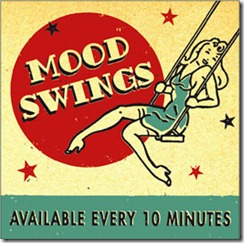Fiction-Zone: Leaps in Fiction Mastery by Diane Holmes
My eyes! My eyes!
How does great pacing so capture the reader’s attention that you can’t look away… even if you really don’t want to see what happens next? (It’s baaaaaad! I can’t look away!)
Through every specific techniques, that’s how.
First, let’s talk about what the word riveting really means to the reader. I believe a reader can only be riveted at the scene level, by action (including dialog) unfolding in real time.
When a reader is riveted, she’s captured by the story, hooked in a way that keeps her turning pages to see—not how the story will end—but what’s on the very next page.
The reader may be shocked at what happened in past scenes and worried about future outcomes, but to be riveted by a story requires that the current scene fully capture the reader’s attention RIGHT NOW. This holds for both stories that have a more languid pace and stories with a high-thrill, fast pace.
Riveting Techniques
1) Keep your characters off balance.
When characters interact with each other (or with the plot), it can be compared to dancing. There are steps that make sense, responses that are expected. He says something, she makes a logical reply. She does something, he counters.
The biggest trick to creating riveting fiction is to stop taking the expected next dance step. Keep your characters and reader slightly off balance at all times in a way that is provocative, unexpected, and unscripted, yet totally believable and serves the story you’re telling.
If your character says to someone, “Good morning,” the boring response is an expected reply. Readers can skip that. Instead, make the reply un-skip-able.
Possible replies to keep the scene off balance:
- “Don’t you start with me!”
- “You only say that because you like pain and suffering.”
- “You’re fired.”
Another example: If your character is holding divorce papers and approaching her husband, you expect that she’ll say she has the papers and hold them out. He’ll probably be pissed off or sad or remorseful. It will be a standard scene we’ve seen hundreds of times before.
Let’s look at off-balance alternatives:
- She puts the papers away and never mentions them.
- She turns away from her husband, walks over to the woman she knows he’s seeing, and gives the papers to her.
- She shows him the papers and says, “Do you think these will hold up? After all, I know this isn’t your real name, is it?”
2) Make it clear that the very next word, the very next action matters.
How?
- By showing that your characters are paying attention. They’re worried. They’re relying on what’s happening now to make choices and guidetheir responses.
- By focusing the scene–what’s actually being discussed or what’s happening–on a key puzzle piece that belongs to the picture of your plot.
3) Focus on the fascinating stuff.
Even mundane details can be fascinating in the hands of an adept writer. So this isn’t about leaving out the small, rich details that make scenes authentic.
Fascinating stuff is the stuff that readers want to know more about because the detail creates a powerful mental image, changes what they thought they knew, or gives them access to an unknown world.
4) Go somewhere important with your details.
If your details (dialog, action, prose) never ends up anywhere, if it’s just there for the sake of words, then your readers will feel tricked. They thought you were telling a riveting story. Instead, you were just chatting over coffee. “Shooting the breeze,” as my Dad used to say.
Don’t put divorce papers in a story where the divorce actually doesn’t matter and the character doesn’t care.
Enough said.
And now for a few pacing questions to help you create riveting scenes. Continue reading You Can’t Look Away: Pacing & The Riveting Story







